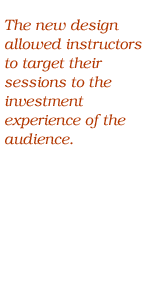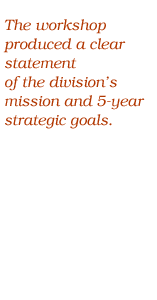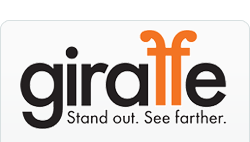Aligning customer education |
Learning from customers |
Redefining strategy |
Fidelity Investments
New customer education strategySituation:
Enrollment in Fidelity's employer-sponsored retirement plans wasn't growing on pace with employee populations. Employee awareness of investment matters (e.g. asset allocation) was also below expectations.
Challenge:
Fidelity's investment education business (FIRSCO) and their prime contractor, Pearson Performance Solutions, needed an effective strategy for the customer education programs. They faced a complex learner environment with multiple stakeholders, plus the investment education content was redundant and not suited for re-purposing to online and other applications.
Solution:
In a high-level analysis of customer needs and existing programs, we conducted dozens of stakeholder interviews, observed existing programs, and audited the complementary online resources, both current and in development.
Fidelity enthusiastically accepted the new design we proposed. Instead of content-oriented programs, the new design focused on the sequence of customer actions (e.g. enroll in the program, defer earnings, etc.). The new arrangement allowed instructors to target their sessions to the investment experience of the audience, and provided a useful map of investor choices for the website.
Results:
We presented the design strategy in an interactive workshop for Fidelity instructors, and a final presentation and report. Fidelity implemented the new design across the organization, both in live instruction as well as in various web applications.
"Jerry Murphy was able to quickly understand FIRSCO's business issues and how their learning intervention could be used to help increase customer wallet share, a key driver for Fidelity in terms of accumulating assets under management. Because Jerry was so keen on focusing on Fidelity's business, it helped our sales team gain credibility in conversations regarding additional business opportunities at Fidelity. Without Jerry's excellent work, the conversations with Fidelity would have come to a stop."
John-Paul Lacombe, Director, Solutions Architects, Pearson Performance Solutions

Various clients
Learning from customers — product/service development roundtablesSituation:
Changing strategic direction or developing new products and services requires information and guidance from the marketplace, from executive decision makers to end-users.
Challenge:
Traditional market surveys and focus groups remain "arm's length" activities that may provide useful data, but do not provide an intimate sense of partnership or an opportunity for real customer insight.
Solution:
We have developed a specialty service of full-day facilitated roundtable discussions. These client-hosted sessions provide a unique forum to discuss ideas, gather information, and test product and service concepts. Guests include customers and authorities in the relevant strategic or market space. The roundtables also provide networking opportunities for participants, and position the client as a customer-focused leader in the market.
Roundtable participants have included:
- senior executives and learning officers to assess the market for knowledge management services
- instructional designers to explore product concepts and features of new e-learning software
- existing and prospective customers to evaluate software development services
Results:
The resulting product and service offerings have been much more customer-focused, creating wider market acceptance, higher revenues and reduced costs. In some cases, clients have entirely avoided the cost of introducing a weakly-defined offer.

National not-for-profit organization
Strategy / change workshopSituation:
The publishing division of a major non-profit needed to take a hard look at its strategic and editorial direction. Political factions had developed inside the group, new products had been added without any strategic rationale, and much of the portfolio had grown redundant and unprofitable.
Challenge:
Sales and financial data clearly showed the problems and how they had developed. But stakeholders from different topic areas had developed conflicting loyalties and competing ‘pride of authorship' for their product lines. Could they all develop a unified strategy for the division and apply more discipline to the product development process? Could they adopt a realistic product life cycle perspective in managing the current portfolio?
Solution:
We designed and facilitated a 2-day strategy workshop for management and key stakeholders in the division. Working to a 5-year time horizon, participants got together in cross-function teams to clarify their mission and strategic goals, and identify objectives, milestones and key responsibilities. The toughest discussion was around reducing the current portfolio.
Results:
The workshop produced a clear statement of the division's mission and 5-year strategic goals. Stakeholders agreed on milestones, responsibilities and metrics. They also committed to a group-wide ‘gate' process for product development.
The group also learned that it can be much easier to ‘change' the future in a 2-day workshop than to deal with the past. People acknowledged their individual and partisan loyalties, committed to work together as a business unit, and began the difficult discussion of how to achieve a 40% reduction of SKUs.


